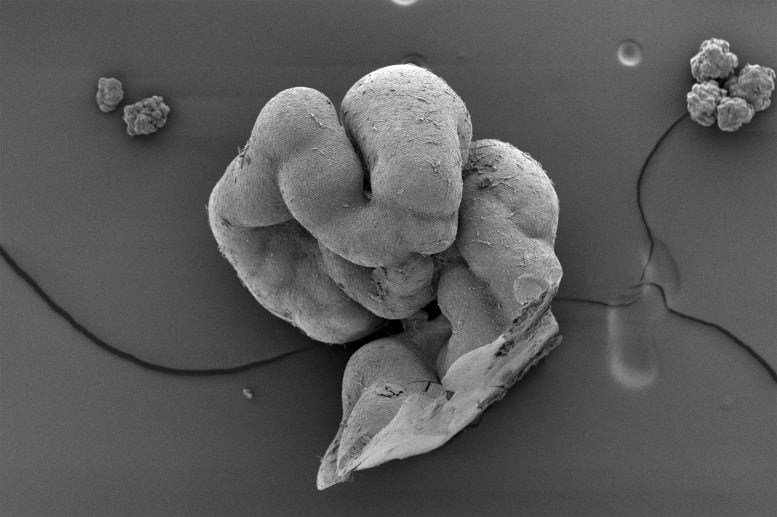Researchers at the Francis Crick Institute have achieved a groundbreaking milestone in the study of human development by creating lab-grown models that include the notochord, a vital tissue in the early embryo. This structural component plays a key role in guiding the formation of the spine and nervous system, marking a significant step forward in developmental biology.
Their work, published on December 18 in Nature, provides a powerful new tool to investigate spinal birth defects and conditions like intervertebral disc degeneration.
Key Advances in Trunk Organoid Models
The team used human stem cells to develop a miniature structure mimicking the human trunk’s early development. This model includes:
- The notochord, which organizes tissues and establishes the body’s main axis.
- Developing neural tissue and bone stem cells, aligned to replicate natural embryonic growth.
The models spontaneously grew to lengths of 1-2 millimeters and demonstrated how the notochord directs surrounding cells to form appropriate tissues at the right time.
Decoding Notochord Formation
To recreate the notochord in the lab, the researchers first studied its natural development in chicken embryos. By comparing these findings with existing data from mouse and monkey embryos, they identified the precise timing and chemical signals necessary to induce notochord formation.
Using this blueprint, they successfully coaxed human stem cells to form the notochord for the first time. Previous efforts had failed due to incomplete understanding of the process.
Applications in Medicine
This lab-grown model provides researchers a unique opportunity to explore conditions that were previously difficult to study, including:
- Spinal birth defects, such as spina bifida.
- Intervertebral disc degeneration, a common cause of back pain in aging populations.
James Briscoe, senior author and Group Leader of the Developmental Dynamics Laboratory, emphasized the significance of this achievement:
“The notochord acts like a GPS for the developing embryo, guiding critical processes in the spine and nervous system. This breakthrough opens doors to understanding human development and tackling conditions we’ve struggled to study until now.”
Future Possibilities
While these trunk organoids cannot develop into full embryos, their simplified structure allows for controlled studies of early human development. The researchers believe these insights could lead to innovations in regenerative medicine and targeted treatments for developmental disorders.
Tiago Rito, the study’s first author, highlighted the methodical approach behind the achievement:
“Finding the right sequence of chemical signals to grow the notochord was like discovering the perfect recipe. Our models work just as they do in nature, emitting signals that shape nearby tissues.”
This achievement represents a transformative step in our ability to explore early human development and address complex medical challenges.
Reference: Nature, DOI: 10.1038/s41586-024-08332-w






